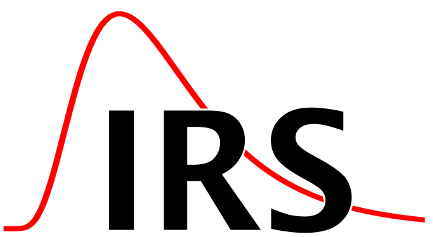Vertical Project 7: Above-ground and near-surface storage
Project management
- Prof. Dr.-Ing. Harald Budelmann, Institute for Building Materials, Concrete Construction and Fire Protection, TU Braunschweig
Work package 7.1: Civil Engineering Concepts
Above-ground and near-surface interim storage facilities for radioactive waste are operated worldwide. Their planned and approved service time covers several decades. One of the essential functions of interim storage is to cool down high level (heat-generating) radioactive waste to a certain degree until it is ready to be stored in deep geological formations. Especially the current lack of an operational final depository for high level radioactive waste enforces the need of interim storage. Furthermore near-surface storage can also be reasoned with the fact that the waste’s danger for human beings and the environment is reducible within a relatively short period of time.
Depending on the stored type of waste several solutions with different periods of use are feasible, e.g. hall constructions, mining facilities or landfill sites. Above-ground storage concepts are always technical multi barrier systems which consist of waste-specific confinement components (inclusion, container) and of constructional components (buildings).
When considering above-ground or near-surface interim storage for very long time periods of perhaps several hundred years significant additional requirements need to be added to the conditions of interim storage facilities, operated nowadays. These partially exceed experiences of established construction types. It is necessary to meet the requirements of the ultimate limit state, serviceability and durability depending on the type of waste and the objectives of interim storage over potentially several centuries. This aspect is one of the major technical challenges this work package is dealing with.
Another challenge arises from the diversity of actions that partly resemble the actions known from nuclear power plants:
- Human intrusion
- Physico-chemical damaging processes of the building material via environmental influences (temperature, humidity, chemical attacks…)
- „Common“ mechanical loads ( dead load, wind and snow load)
- Exceptional loads, e.g. storm, flood, earthquakes, plane crashes, explosion and ballistic threats
The technical barriers have to be chosen in accordance with the concept, the number of barriers and their resistance against the actions with respect to the whole system. The outer building casing may assure the main part of the protective function. All further components of the storage facility have to be designed accordingly. For example by constructing thick walls and a robust supporting framework able to withstand even the most extreme loads during the whole designed service time of an above-ground structure the main resistance can be provided. Alternatively the storage or waste container itself could be constructed to withstand most of possible loads. In this case the requirements of the building’s components can be adjusted properly.
Depending on the danger from the nuclear waste and the intended storage time civil engineering solutions shall be developed which also consider the operational requirements. Above-ground constructions, landfill sites and mining sites near the surface are possible solutions. It is the goal to develop a set of requirement specifications as a basis for multi-criterial assessment of technical concepts.
WP management
- Prof. Dr.-Ing. Harald Budelmann, Institute for Building Materials, Concrete Construction and Fire Protection, TU Braunschweig
Participating institutes
- Institute for Building Materials, Concrete Construction and Fire Protection, TU Braunschweig
Work package 7.2: Probabilistic, monitoring-based Safety- and Life-Cycle-Concept
The required service time of possibly up to several hundred years is far beyond the experience of civil engineering. Moreover, storage facilities have to comply with highest and extraordinary safety requirements. Such include the resistance of the building materials against physico-chemical damage processes over extremely long periods of time and against exceptional loads as mentioned in WP 7.1. For the design of a storage building its resistance against all possible effects has to be captured in a probabilistic safety concept.
During service life the building´s resistance decreases due to ageing and load induced damages. Especially over long periods of time their prediction is afflicted with uncertainty. Therefore the condition of the building has to be monitored during the whole service life time. Monitoring can be achieved e.g. via intermittent inspections or via permanent observation by help of sensors. Such structural monitoring is being applied today for example at bridges and offshore constructions. A monitoring of a storage building is the basis for maintenance decisions and an indispensible prerequisite for long-lasting usage.
Starting from established monitoring- and life-cycle-engineering-concepts for civil engineering structures a concept for above-ground storage of radioactive waste will be developed in WP 7.2. Tools for monitoring, prediction and intervention (repairing, strengthening, replacement, etc.) are supposed to be designed. There is an important link to WP 7.1 as the type of construction and the design quality are essentially influencing the building´s damage sensitivity or its ability to be adapted to changing demands with time. The tools to be developed are incorporated in a modular risk-based evaluation procedure. Also aspects of possible treatment processes of radioactive waste under operation of the facility have to be considered and impacts of maintenance procedures to the facility operation have to be minimized.
WP management
- Prof. Dr.-Ing. Harald Budelmann, Institute for Building Materials, Concrete Construction and Fire Protection, TU Braunschweig
Participating institutes
- Institute for Building Materials, Concrete Construction and Fire Protection, TU Braunschweig
Work package 7.3: Requirements due to Methods of Waste Treatment
This work package will start later during this research project and will refer to results which will be generated in WP 7.1 and 7.2. The focus will be put on possible future nuclear waste treatment procedures in above-ground storage facilities. For more information refer to the project description (German).
WP management
- Prof. Dr.-Ing. Harald Budelmann, Institute for Building Materials, Concrete Construction and Fire Protection, TU Braunschweig
Participating institutes
- Institute for Building Materials, Concrete Construction and Fire Protection, TU Braunschweig


